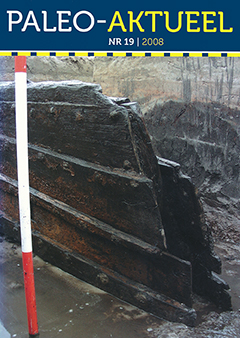Vegetatiehistorie van de onverveende pingo ‘De Oorsprong’ (Noordlaren, Gr.)
Samenvatting
The vegetation history of an intact Holocene peat section from the pingo scar ‘De Oorsprong’ (Noordlaren, province of Groningen). A 4-m-long core was recovered from a peat deposit that had been sealed up artificially with loamy soil in a pingo scar near Noordlaren (Groningen), on the northern part of the Hondsrug ridge. Radiocarbon dates and palynological results show a sediment sequence that virtually covers the Holocene up to slightly after medieval times. The Preboreal and Boreal show the ‘usual’ successive dominance of birch, pine and hazel. In the Early Atlantic oak, hazel and elm dominated the forest in the region, whereas alder mainly spread in permanently moist locations. From around 5800 BP (c. 4650 BC), arboreal pollen values gradually declined, together with the appearance of taxa associated with farming activities. A stronger reduction of forest resulting from increasing human impact occurred around 4500 BP (c. 3200 BC). At this time, the simultaneous presence of vegetation types with ecologically different requirements points to hydrological conditions varying from oligotrophic (in the centre) to quite eutrophic in the outer zone of the depression. This short-lived phase preceded a period of very wet oligotrophic conditions, encouraging the local development of Sphagnum peat. After some recovery in the Late Bronze Age, a quite abrupt and permanent loss of oak woodland in the Early Iron Age has been linked to the production of iron in the nearby Hunze valley. No deposits were found representing the Roman Period to early medieval time. In late medieval times, the clearance of forest was completed. There is ample palynological evidence of a boom in agriculture, which has been related to population growth and the development of the town of Groningen.

